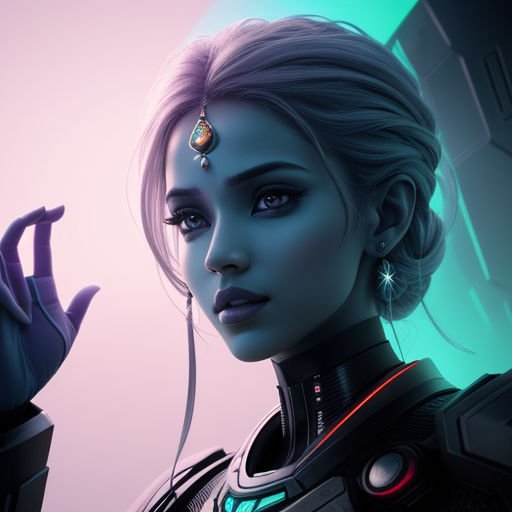Why Caste-Based Aliens Are the Ultimate Drama Kings of Sci-Fi
Exploring the Complex World of Caste Aliens in Starship Troopers
Few science fiction universes captivate audiences with their intricate alien societies quite like the one portrayed in Starship Troopers. Beyond its action-packed surface, the film and its source material dive deep into the concept of caste aliens—extraterrestrial species organized into distinct social and functional hierarchies. These structured alien communities challenge our understanding of civilization and social order, offering a thought-provoking lens through which to examine both fiction and humanity.
Starship Troopers presents a vivid portrayal of caste aliens that shapes the narrative’s tension and stakes. By exploring how these alien castes function, interact, and clash with human forces, we unravel multifaceted themes ranging from survival and cooperation to conflict and identity. This article delves into the fascinating dynamics of caste aliens within the Starship Troopers franchise, shining a light on lesser-known details and their broader implications in science fiction.
The Concept of Caste Aliens: What Does It Mean?
In the realm of alien civilizations, the idea of caste aliens refers to extraterrestrial species organized into highly specialized groups or “castes,” each with defined roles and characteristics. This system mimics certain insect societies on Earth, such as ants or bees, where every member contributes in a unique but interconnected way to the whole community.
Biological and Social Structure
Caste systems in aliens usually exhibit strict biological and behavioral divisions. For instance, a species might include:
– Warriors or soldiers designed for combat and defense
– Workers responsible for construction, maintenance, or food gathering
– Queens or leaders who govern reproduction and strategy
– Scouts or spies specializing in reconnaissance
In Starship Troopers, the alien race known as the Arachnids exemplifies this. Their caste system ranges from small, expendable “drones” to the powerful “warriors” and enormous “brain bugs” that control the entire hive.
Why Caste Systems in Aliens Matter
These caste aliens help storytellers create believable and distinct cultures alien to human experience. The rigid, often ruthless division of roles highlights themes of specialization, sacrifice, and sometimes the loss of individuality—all fertile ground for conflict and philosophical exploration.
Moreover, these caste systems challenge viewers to consider how different social orders might arise on alien worlds. They push the boundaries of traditional narratives about equality and hierarchy, illustrating a different form of societal organization—one that often seems alien yet strangely familiar.
The Arachnid Caste System: Starship Troopers’ Iconic Alien Society
Starship Troopers’ alien antagonists, the Arachnids or “Bugs,” are a textbook example of caste aliens. Their hierarchical, insect-like society introduces a complex enemy that is not just mindless destruction but a structured civilization with roles and strategies.
Breakdown of the Arachnid Castes
1. **Drones** – The smallest and most numerous, drones serve as basic laborers and fodder. Although expendable, they play a critical role in maintaining the colony and overwhelming foes by sheer numbers.
2. **Warriors** – Larger and more aggressive, these castes are the frontline soldiers designed for combat. They wield formidable natural weapons such as claws and mandibles.
3. **Tanks** – Massive and heavily armored, tank bugs act as siege engines or heavy artillery, capable of breaching human fortifications.
4. **Brain Bugs** – The most intelligent and controlling caste, these bugs orchestrate Arachnid tactics and coordinate hive activities. They symbolize the “queen” leadership archetype.
This stratification creates a terrifying adversary that combines brute force with cunning command—making the Bugs a multidimensional threat rather than mere monsters.
The Role of Caste in Arachnid Survival and Strategy
The Arachnid castes are not just biological curiosities; they reflect a highly efficient survival mechanism adapted for interstellar war. Each caste’s specialization is crucial:
– **Drones** swarm and exhaust enemies, acting sacrificially to protect stronger castes.
– **Warriors** execute offensive maneuvers, leveraging both strength and agility.
– **Tanks** demolish barriers, clearing paths for invasion.
– **Brain Bugs** adapt strategies in real time, learning from battles.
This system mirrors some social insect behaviors but scaled up to a terrifying intergalactic conflict level. The cohesion of caste aliens within the Bug army emphasizes how specialization and unity create strength—one of the film’s core alien civilization themes.
Human Reflections Through Alien Caste Systems
While the Arachnid caste aliens evoke horror and tension, they also serve as a mirror reflecting human social dynamics and philosophical questions.
Caste Systems and Human Societies
Humans have historically organized societies into classes and castes, sometimes rigidly. Starship Troopers offers a subtle critique by juxtaposing human militarism and authoritarian governance with the Arachnid’s biological determinism.
The human side of the story revolves around a society where citizenship and military service are deeply intertwined, raising questions about social roles, sacrifice, and the value of individual choice versus societal duty. The caste aliens contrast with this by representing a society where individuals have no freedom beyond their biological role.
Philosophical Questions Raised by Caste Aliens
– What does individuality mean when roles are pre-assigned biologically?
– Can unity and specialization justify suppression of personal freedom?
– How do different social structures affect the nature of war and peace?
These questions resonate beyond the sci-fi screen, prompting viewers to consider their own societal assumptions and values.
Cinematic Innovations and Trivia Behind Starship Troopers’ Caste Aliens
The representation of caste aliens in Starship Troopers is also a product of innovative filmmaking and design, blending storytelling with technical artistry.
Special Effects and Creature Design
The film’s visual effects team, led by Phil Tippett and his company, pushed boundaries with animatronics and CGI to bring the Arachnid castes to life. Each caste was meticulously designed to reflect its functional role:
– Drones were small, fast, and numerous, achieved through clever puppetry and computer graphics.
– Tanks were massive mechanical creations combining physical models and digital enhancements.
– Brain Bugs featured complex puppets capable of subtle emotional expressions, enhancing their strategic persona.
This technical mastery contributed to making these caste aliens not only believable but also memorable.
Little-Known Facts
– The original novel by Robert A. Heinlein portrays the Arachnids less as numerous but more as a single massive hive mind, a nuance adapted differently in the film.
– Director Paul Verhoeven infused the film with satirical tones, partly critiquing fascism and militarism, coloring the depiction of both humans and alien castes.
– Behind the scenes, some of the insect scenes used actual insect footage to enhance realism.
For more on the making of Starship Troopers, fans can explore detailed resources like the [Official Starship Troopers Behind the Scenes](https://www.starshiptroopers.com/making-of).
Expanding the Caste Aliens Concept Beyond Starship Troopers
The fascination with caste aliens extends well beyond Starship Troopers, inspiring countless other sci-fi creations and academic discussions.
Similar Caste Alien Models in Science Fiction
Many sci-fi works draw from or expand upon this concept:
– The Zerg in StarCraft, with their hive mindset and specialized units.
– The Xenomorphs in Alien, showcasing different alien types within one species (worker, queen).
– The Formics in Ender’s Game, whose hive society raises ethical debates about warfare and communication.
These examples underline how caste aliens enable rich storytelling around unity, diversity, and conflict.
What Starship Troopers Teaches About Creating Alien Civilizations
When crafting believable alien worlds, adopting caste systems encourages:
– Clear differentiation between species roles for dramatic and narrative clarity.
– Exploration of alternative societal norms beyond human experience.
– Opportunities to delve into biology and evolution as anchors for culture.
For sci-fi writers and enthusiasts, Starship Troopers remains a vital reference point on how to balance action, philosophy, and world-building.
What Makes the Caste Aliens of Starship Troopers Enduringly Fascinating?
At its core, the portrayal of caste aliens taps into universal themes of identity, purpose, and survival. The Arachnids’ caste system encapsulates terrifying efficiency but also evokes a tragic lack of personal freedom. This tension between individuality and collective roles remains a poignant area of exploration.
Starship Troopers’ development of caste aliens does more than populate a universe with monsters. It ignites the imagination, challenges perspectives on social order, and invigorates the alien civilizations genre with originality and depth.
Whether you’re a sci-fi fan, a student of culture, or simply intrigued by the possibilities of life beyond Earth, the caste aliens of Starship Troopers offer a complex, rewarding topic rich with insight and discovery.
Ready to dive deeper into alien societies and the mysteries of interstellar life? Explore more about extraterrestrial civilizations and the fascinating ways sci-fi challenges our view of the cosmos.














Post Comment